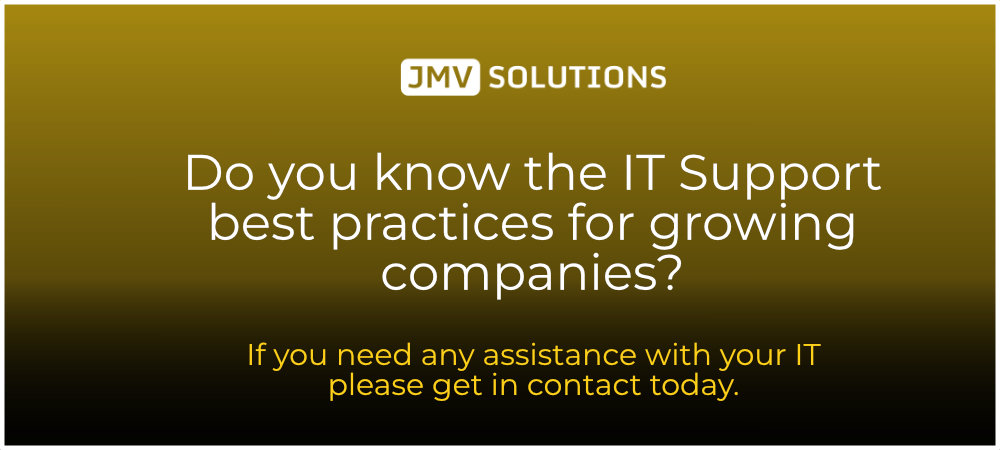IT is mandatory for businesses in this day and age. JMV specialises in helping businesses in Exeter and Devon with their IT. However, there are new technologies and systems that can utilised by businesses emerging all the time so in this article we are going to look at some of the IT best practises for growing businesses:
1. IT audits
IT audits assist you in locating problems with your IT infrastructure before they materialise into serious difficulties. The majority of firms approach IT in a reactive manner, which is IT suicide! Although this can seem like a good alternative, an IT reactive approach will ultimately cost you dearly. Firefighting should not be the focus of your IT management. Establishing a procedure that enhances your IT infrastructure requires routine IT audits.
A thorough approach to IT management gives you the knowledge you need to understand how technology affects your organisation and helps you to envision what your company will look like when technology is supporting it the way you want it to. As a result, you can stop worrying about downtime and start utilising technology to accomplish your business objectives. IT will become a resource once you integrate it with your corporate objectives. Instead of concentrating on IT management, consider how effectively using your IT infrastructure will help you achieve your objectives.
2. IT plan
If you don’t plan, you’re intending to fail. For IT operations to be predictable and controlled, regular planning is essential. Without a sound IT strategy, it’s extremely probable that the projects you’ll be working on will turn into money and resource guzzlers that provide little of value. A good plan that thoroughly assesses your IT infrastructure will reduce the number of surprises.
Without a solid plan, unplanned outages, security breaches, and malfunctions all blend together. As a result, the influence they have on your company is not assessed. As a result, you won’t be able to calculate your actual IT expense. A sound IT strategy encourages the adoption of best practises and tracks any deviations. Your IT costs will become predictable and so manageable as a result.
When you have an IT strategy in place, it is simple to track inconsistencies and deviations and determine how they affect your company. This places you in a position where you may begin investigating the underlying reason and figuring out how to avoid such issues in the future.
3. Cyber Security
If you believe that a small firm is immune to cyberattacks, you are in for a surprise. 43% of cyberattacks in 2016 were directed against small businesses, according to smallbiztrends.com, however only 14% of these companies consider their cybersecurity as highly effective at reducing cyber risks and vulnerabilities.
You should be ready as a small business owner to defend your organisation and the information of your customers from hackers. These online attacks take many different shapes, including phishing, malware, spyware, ransomware, etc. Small business owners find it difficult to keep up with the newest technological advancements or simply to keep their computers safe from malware and hackers due to limited finances and competing priorities. We take cybersecurity very seriously, which is why we’ve written a number of blogs that share knowledge, advice, and general education.
- Keep up with risks – Follow tech news to learn about new threats, security updates, bug fixes, etc.
- Keep your systems updated. Updates for operating systems and applications are published to address known security holes. Maintaining system updates prevents attackers from taking advantage of known software problems.
- Backup your data so that you can restore your system and keep your files safe if you ever become the victim of harmful software.
- Informing your staff on cybersecurity risks is important, as human mistake poses the highest risk. Most cyberattacks may be avoided with a little education since they are recognisable. To protect yourself from the typical phishing and malware threats, make sure you have at least a basic security policy covering emailing, file sharing, system updates, device and network access, and password best practises.
- Network security – The entrance to your entire IT infrastructure is your WiFi hardware. As a result, it is imperative that you protect your WiFi network. Never use the router’s factory-set default password. The most secure sort of code to use is WiFi Protected Access II. Also, create a separate guest WiFi network with unique passwords and security features to keep outsiders from accessing your internal network.
- Password management and Two-Factor Authentication (2FA) – It is strongly advised to use a multilayered security solution that combines a memorised password with an OTP (One Time Password). A nice example is combining a password manager like LastPass with an authenticator like Google Authenticator.
4. Business Compliance Needs
As technology is advancing so quickly, your company’s regulatory environment is probably always changing. You must therefore be aware of the compliance standards and keep track of any changes to the law affecting your industry. This suggests that you must maintain an updated IT plan. It would be good to outline your plan in writing, at the very least including a roadmap for hardware and software compliance. This document needs to be reviewed at least once a year, and the most recent compliance standards as well as the overall Business/IT strategy should be compared.
Also, you ought to at the very least have a set of privacy guidelines. This should be implemented as best practise even if you do not handle sensitive client information. These guidelines ought to cover what to do in the event of a data breach. It is always advisable to have a document you can turn to in times of uncertainty, regardless of whether you need to contact your customers, regulatory agencies, or publish it on your website.
5. Asset Management
A strong asset management system is essential for boosting productivity. It provides you with a clear picture of all of your assets, including your virtual machines, cloud infrastructure, hardware, and software. Your whole IT infrastructure’s records are established and kept in one place with comprehensive asset management. Furthermore, it guarantees that your new hires are prepared for digital integration right away.
Your asset management system will make sure that all of your assets are being used to their full potential and that any that are approaching the end of their useful lives are replaced before a breakdown occurs. All purchase should be arranged with lead times in mind; you do not want your money to be restricted by having too much inventory. Reduce the cost of having your assets lie idle while you wait for a breakdown or a time when they will be needed. You may easily accomplish this with the use of an asset management system.
An asset management system should be able to schedule and track purchases, provide reports on asset kinds, and keep track of contract expiration and renewals in addition to centrally managing your IT assets. With the help of a central management system, you can keep track of your assets and easily extend your IT infrastructure as needed.
We assist Exeter and Devon businesses in maximising their use of technology
It is important for all businesses to embrace technology as it can make their business run so much smoother and more efficiently. So, if you own a business based in Exeter or Devon and would like any assistance with any of these technologies or anything else to do with IT please contact us today.


